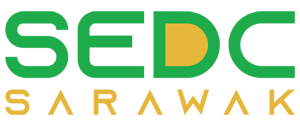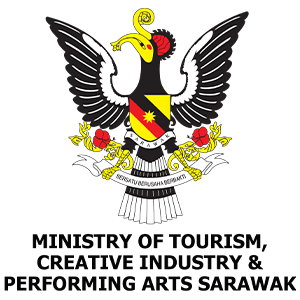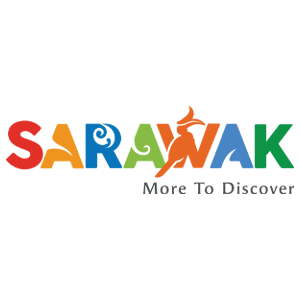HANDICRAFT SHOP
Located next to the restaurant, the Sarawak Cultural Village’s retail outlet offers a wide range of Sarawakian handicrafts, souvenirs, books and gifts A stop here is a must before you leave the Village.
In the Handicraft shop, you can buy the book “A Short Walk Through Sarawak”, which is the definitive guide to the Sarawak Cultural Village, offering readers an in-depth look at this unique living museum and the people who live and work here. It is also a great introduction to Sarawak’s peoples and cultures.
Sarawak is rich in its cultural diversity. Of the many highlights of Sarawak’s unique culture are the beautiful traditional headgears and beads. You can browse through the different headgears and beads shown below:
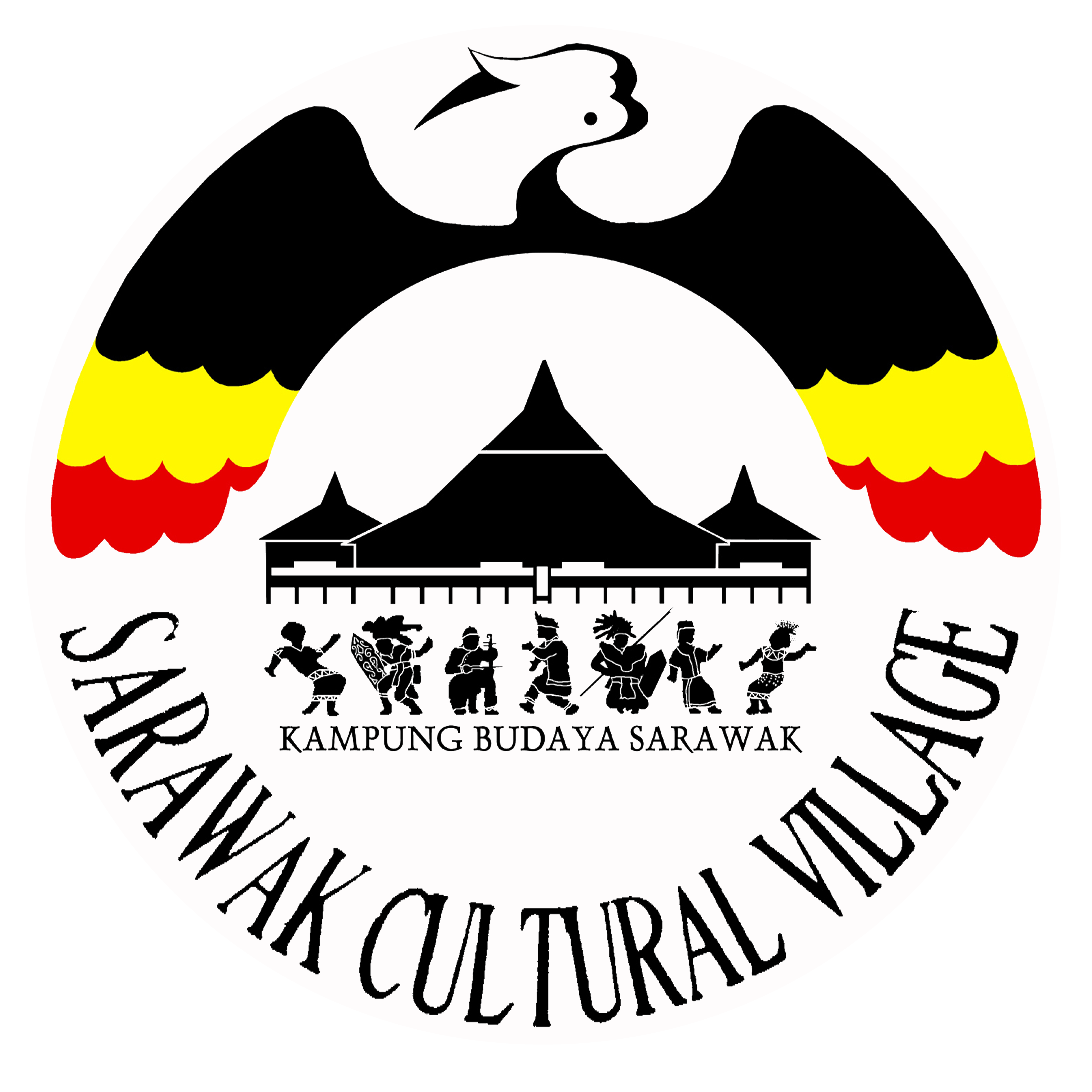
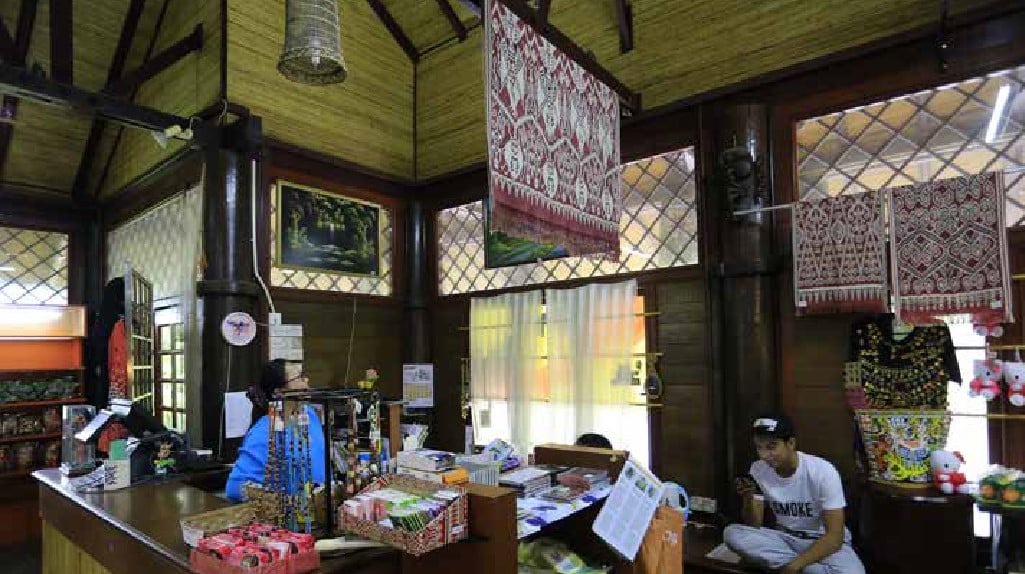









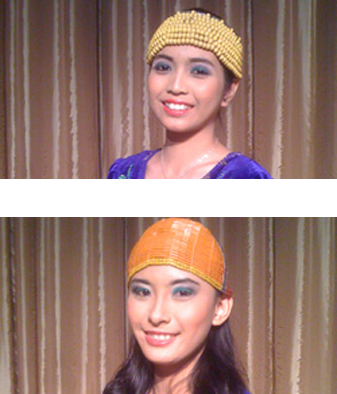




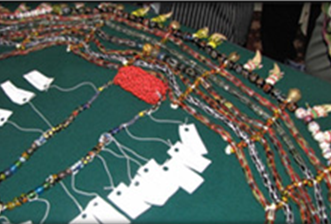
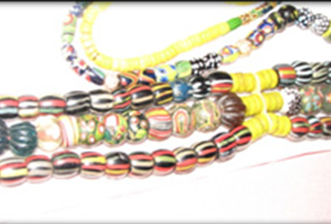
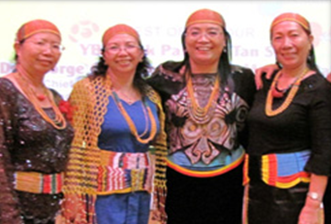
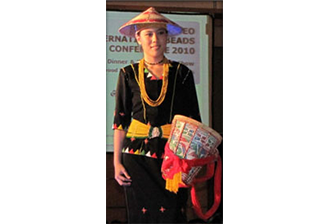
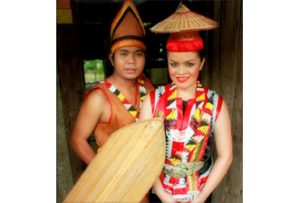 Necklace
Necklace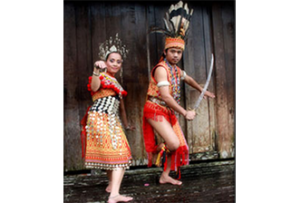 Necklace and shoulder accessories
Necklace and shoulder accessories This is a herbal plant usually prepared as salad meals by the Malay people of Sarawak. The benefits of eating this plant is believed to promote good health, youthfulness and fresh breath.
This is a herbal plant usually prepared as salad meals by the Malay people of Sarawak. The benefits of eating this plant is believed to promote good health, youthfulness and fresh breath. It has been used for many centuries as a treatment for ailments. It is also used to reduce cholesterol and blood pressure. It is believed to have anti-allergic properties, and is used as a remedy for arteriosclerosi. It also relieves spasms of the smooth muscle in the walls of the internal organs, making it valuable for gallbladder problems. Researchers have found it to be mildly antiseptic as well.
It has been used for many centuries as a treatment for ailments. It is also used to reduce cholesterol and blood pressure. It is believed to have anti-allergic properties, and is used as a remedy for arteriosclerosi. It also relieves spasms of the smooth muscle in the walls of the internal organs, making it valuable for gallbladder problems. Researchers have found it to be mildly antiseptic as well. Senduduk or shrubs with purple flowers or white flowers can be found in the bush. It is traditionally used as an antidote for poisons.
Senduduk or shrubs with purple flowers or white flowers can be found in the bush. It is traditionally used as an antidote for poisons.
 The leaves are used either fresh or dried, have a nutty, botanical fragrance which enhances the flavour of local foods, especially rice dishes and cakes. The leaves also have a repellent effect on cockroaches.
The leaves are used either fresh or dried, have a nutty, botanical fragrance which enhances the flavour of local foods, especially rice dishes and cakes. The leaves also have a repellent effect on cockroaches. Betel is used by the Malays as a traditional hospitality in the wedding ceremony of the Malays. Betel is also used in ritual incantations in the process of treating a patient. The leaf can also be taken along with Clove to treat diarrhoea. To treat bleeding of the nose, betel leaf is rolled up and stuffed into the nostrils to stop the flow of blood from the nose.
Betel is used by the Malays as a traditional hospitality in the wedding ceremony of the Malays. Betel is also used in ritual incantations in the process of treating a patient. The leaf can also be taken along with Clove to treat diarrhoea. To treat bleeding of the nose, betel leaf is rolled up and stuffed into the nostrils to stop the flow of blood from the nose. Ketumpangan Air has been used for treating abdominal pain, abscesses, acne, boils, colic, fatigue, gout, headache, renal disorders, and rheumatic joint pain. The roots are used to treat fevers and the aerial parts are used as dressing for wounds.
Ketumpangan Air has been used for treating abdominal pain, abscesses, acne, boils, colic, fatigue, gout, headache, renal disorders, and rheumatic joint pain. The roots are used to treat fevers and the aerial parts are used as dressing for wounds. Black Pepper usually dried and used as a spice and seasoning in food. This plant was believed to cure illness such as constipation, diarrhoea, earache, gangrene, heart disease, hernia, hoarseness, indigestion, insect bites, insomnia, joint pain, liver problems, lung disease, oral abscesses, sunburn, tooth decay, and toothaches.
Black Pepper usually dried and used as a spice and seasoning in food. This plant was believed to cure illness such as constipation, diarrhoea, earache, gangrene, heart disease, hernia, hoarseness, indigestion, insect bites, insomnia, joint pain, liver problems, lung disease, oral abscesses, sunburn, tooth decay, and toothaches. Lemongrass is widely used as a herb in Asian cuisine. It has a subtle citrus flavour and can be dried and powdered, or used fresh. Lemongrass oil is used as a pesticide and a preservative. Research shows that lemongrass oil has anti-fungal properties.
Lemongrass is widely used as a herb in Asian cuisine. It has a subtle citrus flavour and can be dried and powdered, or used fresh. Lemongrass oil is used as a pesticide and a preservative. Research shows that lemongrass oil has anti-fungal properties. Daun Kari, an aromatic leaf often used in Indian cuisine. The leaves are also used as a herb in Ayurvedic medicine. They are much valued as an anti-diabetic, antioxidant, antimicrobial, anti-inflammatory, hepatoprotective, anti-hypercholesterolemia etc. They also contain iron.
Daun Kari, an aromatic leaf often used in Indian cuisine. The leaves are also used as a herb in Ayurvedic medicine. They are much valued as an anti-diabetic, antioxidant, antimicrobial, anti-inflammatory, hepatoprotective, anti-hypercholesterolemia etc. They also contain iron. Lengkuas is a plant in the ginger family, and use as a herb in cooking. The rhizome is an abortifacient. It has carminative, anti-tuberculosis and stimulant properties. Ground rhizome is also used in the treatment of skin infections like eczema, ringworm, etc.
Lengkuas is a plant in the ginger family, and use as a herb in cooking. The rhizome is an abortifacient. It has carminative, anti-tuberculosis and stimulant properties. Ground rhizome is also used in the treatment of skin infections like eczema, ringworm, etc. Turmeric is currently being investigated for possible benefits in Alzheimer’s disease, cancer, arthritis, and other clinical disorders. Some research shows compounds in turmeric to have anti-fungal and anti-bacterial properties.
Turmeric is currently being investigated for possible benefits in Alzheimer’s disease, cancer, arthritis, and other clinical disorders. Some research shows compounds in turmeric to have anti-fungal and anti-bacterial properties. Pegaga is a mild adaptogen, is mildly antibacterial, antiviral, anti-inflammatory, antiulcerogenic, anxiolytic, nervine and vulnerary, and can act as a cerebral tonic, a circulatory stimulant, and a diuretic. Pegaga may be useful in the treatment of anxiety, and may be a promising anxiolytic agent in the future.
Pegaga is a mild adaptogen, is mildly antibacterial, antiviral, anti-inflammatory, antiulcerogenic, anxiolytic, nervine and vulnerary, and can act as a cerebral tonic, a circulatory stimulant, and a diuretic. Pegaga may be useful in the treatment of anxiety, and may be a promising anxiolytic agent in the future.